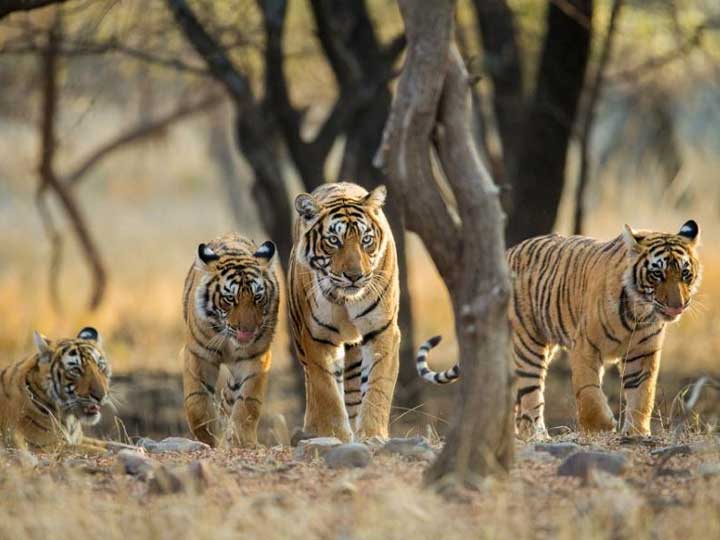 Niti Post
|
-
April 1, 2023
Niti Post
|
-
April 1, 2023

The Government of India on April 1, 1973, launched ‘Project Tiger’ to protect tigers and promote their conservation in India. Since then, the Project has helped in restoring the population and strengthening conservation efforts for tigers. Project Tiger is one of the largest species conservation initiatives in the world, and has been hailed worldwide for successfully conserving the species.
Tiger is a vital animal species that ensure a viable population of other wild animals. The animal is important for the food chain and helps in maintaining the ecological viability of the entire area, habitat, water, and climate security of the region.
Journey from 1,411 to 2,967
There was a time when the number of tigers in the country was low. However, in 2023, India has reached a stage when it is considering translocating Indian tigers to other countries to safeguard the species. According to media reports, India is considering translocating a few tigers to Cambodia, where the animals have become extinct. The countries signed a Memorandum of Understanding (MoU) in November 2022 for the reintroduction of tigers.
This did not happen in a night, and took a great amount of efforts. India achieved a doubling of tiger population in 2018, 4 years ahead of the targeted year 2022. The last tiger census of 2018 showed a rise in the tiger population. From 1,411 tigers in 2006 to 2,967 tigers in 2018, the number shows the successful implementation of Project Tiger.
India is among the 13 countries with tiger reserves that in 2010 decided to double its tiger populations by 2022. It is also home to 52 Tiger Reserves covering approximately 75,000 Sq Km area in 18 States with approximately 75% population of the wild tiger at global level.
About Project Tiger
Launched from Jim Corbett National Park, Uttarakhand, the project is an ongoing scheme of the Ministry of Environment, Forest and Climate Change (MoEFCC). The centrally sponsored scheme is applicable in nine reserves of different States, namely Assam, Bihar, Karnataka, Madhya Pradesh, Maharashtra, Odisha, Rajasthan, Uttar Pradesh, and West Bengal.
Project Tiger has been converted into a statutory authority, National Tiger Conservation Authority (NTCA) by providing enabling provisions in the Wild Life (Protection) Act, 1972 through an amendment, via Wild Life (Protection) Amendment Act, 2006.
The NTCA addresses ecological and administrative concerns for conserving tigers. It provides a statutory basis for the protection of tiger reserves and provides strengthened institutional mechanisms for the protection of ecologically sensitive areas and endangered species.
Conservation Assured |Tiger Standards
As of August 2022, 17 Tiger Reserves in the country have got CA|TS international accreditation. This includes Manas, Kaziranga, and Orang in Assam, Satpura, Kanha, and Panna in Madhya Pradesh, Pench in Maharashtra, Valmiki Tiger Reserve in Bihar, Dudhwa in Uttar Pradesh, Sunderbans in West Bengal, Parambikulam in Kerala, Bandipur Tiger Reserve of Karnataka, and Mudumalai and Anamalai Tiger Reserve in Tamil Nadu. Further, two Tiger Reserves have got International Tx2 Award.
CA|TS or Conservation Assured |Tiger Standards is a globally accepted conservation tool that sets best practices and standards to manage tigers and encourages assessments to benchmark progress.
Tiger Conservation in India
The Government of India is actively taking initiatives to conserve and protect tigers in the country. In the 19th Meeting of the National Tiger Conservation Authority (NTCA) (January 2022), Union Environment Minister, Bhupender Yadav called for adopting active management for the conservation of tigers. Similarly, during the 3rd Asia Ministerial Conference in April 2016, the Prime Minister of India had observed that tiger conservation is not a drag on development and both can happen in a mutually complementary manner by reorienting the conservation strategies.
Tiger Conservation efforts in the Indian context require the combined efforts of the government and the community at its centre. Both require each other, and continuous efforts are being made for the involvement of local communities in protection and Eco-tourism activities. A part of it is motivating and generating awareness among people in the northeast to voluntarily surrender their airguns to curb poaching of wildlife. In addition to this, funds are also allocated accordingly for enhancing the conservation efforts. For instance, the budgetary allocation for tiger conservation was increased from Rs 185 crore in 2014 to Rs 300 crore in 2022.
Related Items
New Vista Project set to unify India’s governance structures
Cabinet okays Rs 3,712 crore Patna-Sasaram 4-lane highway project
Project 2025: What Is It? Who Is Behind It? How Is It Connected To Trump?